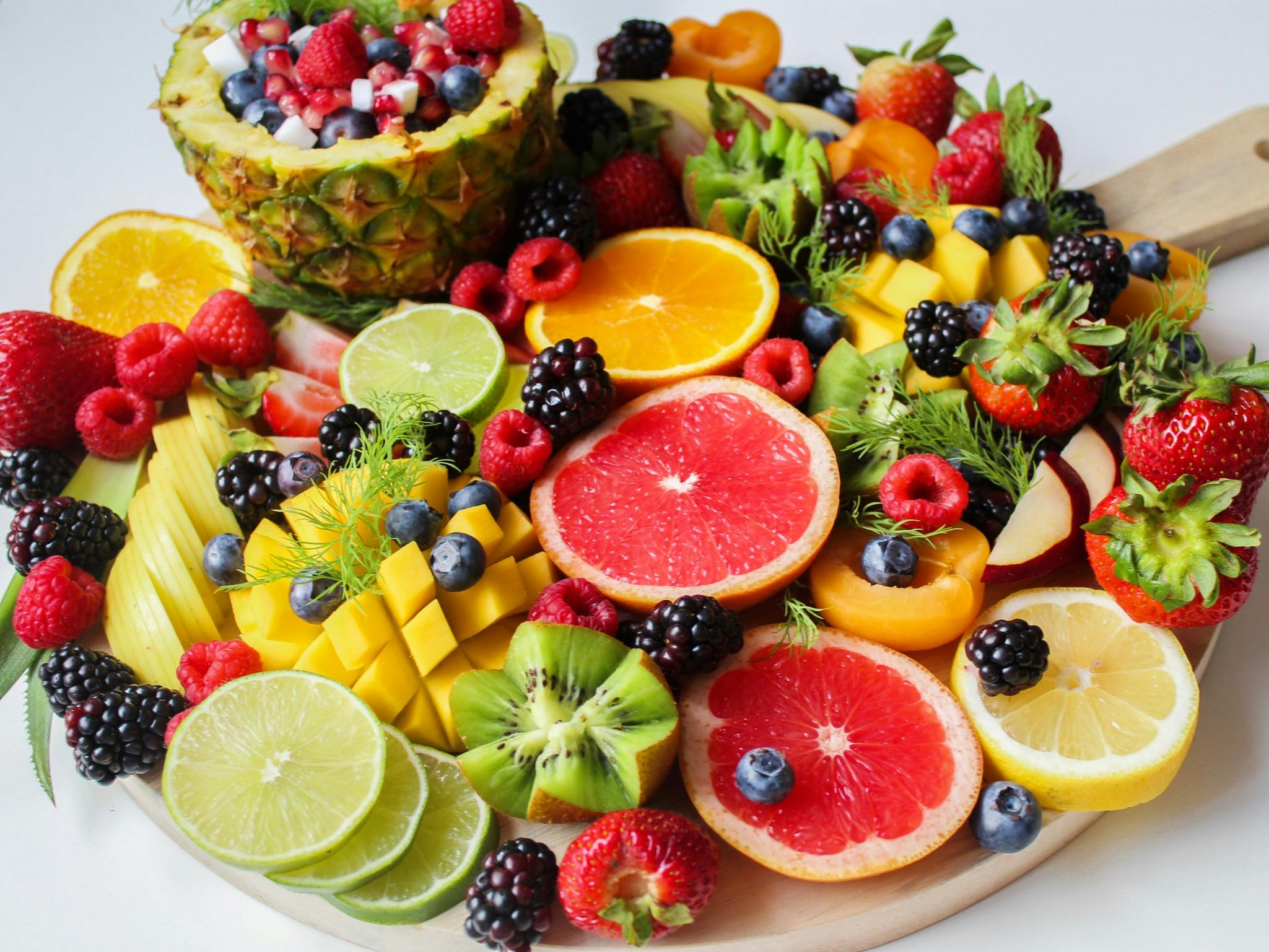Pineapple on pizza is a topic of debate that has been dividing pizza lovers for decades. While some people enjoy the sweet and savory combination of pineapple and pizza, others feel that it does not belong on a pizza. This article will explore the reasons why pineapple does not belong on pizza, and discuss why it is considered such a controversial ingredient.Pineapple does not belong on pizza because it is an ingredient that does not traditionally pair well with cheese and tomato sauce, which are the most commonly used ingredients in pizza. The combination of sweet, acidic pineapple with savory cheese and tomato sauce can be overwhelming and unappetizing for some people. Additionally, some people find the texture of pineapple to be too soft and mushy for a pizza topping, which detracts from the overall texture of the pizza.
The History Of Pineapple On Pizza
Pineapple as a topping on pizza is a controversial topic. Some people love it, while others vehemently oppose it. But where did the idea to put pineapple on pizza actually come from? The answer to this question may surprise you!
The first recorded incident of pineapple being used as a pizza topping occurred in 1962 in Canada. A restaurant in Chatham, Ontario called the Satellite Restaurant decided to experiment with different toppings and created a “Hawaiian” pizza with pineapple, Canadian bacon, and cheese. The dish was an instant hit and began to spread throughout Canada and eventually the United States.
From there, the idea of putting pineapple on pizza spread around the world. In Europe, particularly Italy and Greece, pineapple on pizza is still relatively uncommon, but it has become increasingly popular over the years. In other parts of the world like South America and Asia, pineapple on pizza is becoming more accepted as well.
Today, there are countless variations of Hawaiian-style pizzas featuring different combinations of ingredients such as ham, bacon, onions, peppers, olives, mushrooms, etc., along with pineapple and cheese. It’s one of the most popular types of pizza in North America and continues to be a point of debate among fans of traditional Italian-style pizzas. Whether you love it or hate it – you can thank Canada for bringing us this unique combination!
Arguments For Eating Pineapple On Pizza
Pineapple on pizza has been a controversial topic for many years, with some people believing it to be a delicious combination and others finding it repulsive. Those who support the idea of pineapple on pizza claim that the sweetness of the pineapple creates an interesting contrast against the savory flavor of the pizza. They also point out that fruit has been used as a topping for pizzas since the late 16th century, so it is nothing new. Additionally, they argue that pineapple adds a unique texture to pizza, making it more interesting and enjoyable.
Arguments Against Eating Pineapple On Pizza
On the other hand, there are those who vehemently oppose pineapple on pizza. They argue that it is too sweet and clashes with the traditional flavors of pizza. Furthermore, they believe that adding fruit ruins the authenticity of classic Italian-style pizzas and should not be allowed in a dish whose history dates back centuries. Finally, some people believe pineapple is too hard to chew when placed on top of a pizza and detracts from its overall taste.
The Debate Over The Use Of Pineapple On Pizza
For many years, the debate over the use of pineapple on pizza has been a contentious one. Some pizza-lovers feel that pineapple should never be put on a pizza, while others feel that it is a perfectly acceptable topping. Whether you are for or against pineapple on pizza, it is undeniable that it has become an integral part of some regional cuisines.
In the U.S., pineapple on pizza is often seen as a controversial topping, although it has been gaining traction in recent years. Proponents argue that the sweetness of the pineapple helps to cut through the savory flavors of the pizza and creates a unique flavor profile. On the other hand, detractors argue that pineapple does not belong on pizza and ruins its classic flavor.
In other parts of the world, including parts of Europe and Asia, pineapple is more accepted as a topping for pizzas. In fact, some regions even have their own variations on this classic dish. For example, in Hawaii there is a popular version called “Hawaiian Pizza” which includes Canadian bacon and pineapple as toppings. Similarly, in Thailand there is a dish called “Pineapple Fried Rice” which includes diced pineapples and other vegetables cooked in a wok with rice.
At the end of the day, whether or not you choose to put pineapple on your pizza is completely up to you! Whether you are for or against this unique topping choice, it has certainly become an integral part of some regional cuisines around the world and will continue to be debated for years to come.
Differences In Regional Preferences For Topping
When it comes to topping a pizza, there are some distinct regional preferences that are worth noting. While some regions prefer classic toppings such as pepperoni and mushrooms, others have more unique tastes when it comes to what they want on their pies. In the United States, for example, the Midwest is known for its love of barbecue chicken pizzas. Meanwhile, in Hawaii, a popular topping is Spam. In the Pacific Northwest, a top choice is smoked salmon. In the Southwest, green chiles are a must-have ingredient on any pizza.
In Europe, topping preferences vary from country to country. Italian pizzas often feature anchovies or capers while Spanish dishes might include cured meats such as chorizo or jamon serrano. If you’re in Germany, you’ll find that sauerkraut is often used as a topping while in Scandinavia herring and smoked fish are popular choices. French pizzas often feature goat cheese and other lighter ingredients like mushrooms and onions.
No matter where you go around the world, there will always be regional variations when it comes to pizza toppings. From classic combinations like pepperoni and mushrooms to more exotic choices like Spam in Hawaii or smoked salmon in the Pacific Northwest – each region has its own unique tastes when it comes to what goes on top of their pies!

The Impact Of Pineapple On The Taste Of Pizza
Pineapple is a popular topping for pizza, as it adds a unique and delicious flavor. The sweetness of the pineapple contrasts with the savoriness of the pizza, creating an unforgettable taste. Many people enjoy pineapple on their pizza, and it has become a popular topping in many pizzerias. However, not everyone enjoys pineapple on their pizza due to its strong flavor.
The impact of pineapple on the taste of pizza depends on the individual’s preference. For those who enjoy the flavor, it can be an exciting and delicious addition to their meal. The sweetness of the pineapple is balanced out with other ingredients such as cheese and sauce, creating a mouth-watering combination. On the other hand, those who don’t care for sweet toppings might find that pineapple overwhelms other flavors in the pizza and makes it too sweet for their liking.
Pineapple can also affect the texture of a pizza. The juice from fresh pineapple can make a crust soggy if not cooked properly or used in excess. This can be a turn off for some people who prefer crispy crusts and don’t like soggy pizzas. Additionally, pineapples are acidic which can affect how long it takes to cook a pizza or how much heat is needed in order to get a crispy crust.
Overall, pineapples have both positive and negative impacts on the taste of pizza depending on individual preferences. If you enjoy sweet toppings then adding pineapple can be an exciting way to add flavor to your meal. However, if you don’t like sweet toppings then you might want to opt for something else instead. Additionally, make sure that you keep an eye out for soggy crusts when adding pineapples as they can make your pizza less enjoyable if not cooked properly or used in excess.
Potential Health Risks Associated With Eating Pineapple On Pizza
Eating pineapple on pizza is a controversial topic, as some people love it and some despise it. While there are passionate arguments for and against pineapple on pizza, there are also health risks associated with it. Eating too much pineapple can be detrimental to one’s health due to its high sugar and acidity levels.
Consuming high amounts of pineapple can cause digestive problems such as bloating, cramping, nausea, and diarrhea. The sugar in the fruit can also contribute to tooth decay, while its acidity can lead to a decrease in calcium levels in the body. Additionally, pineapple contains bromelain which can irritate the mouth, throat, and stomach lining.
People with digestive disorders such as irritable bowel syndrome (IBS) may experience worse symptoms when consuming large amounts of pineapple due to its high fiber content. People with ulcers should also avoid eating too much pineapple as it can worsen their condition. Furthermore, those with allergies may experience severe reactions after eating foods containing pineapple due to the presence of allergenic proteins in the fruit.
It is important to remember that eating small amounts of pineapple on pizza is unlikely to cause any serious health problems. However, if you have any existing digestive issues or allergies then you should consult your doctor before consuming large amounts of this fruit.
Overall, eating too much pineapple on pizza can have negative health effects due to its high sugar and acidity levels. People with existing digestive issues or allergies should be especially cautious when consuming this fruit and should consult their doctor before doing so.
Arguments For Eating Pineapple On Pizza
The argument for eating pineapple on pizza is a strong one. Many people argue that the sweet and tangy flavor of the pineapple complements the salty flavor of the cheese, creating an ideal balance. Additionally, the juicy texture of the pineapple helps to break up the richness of a traditional cheese pizza. Moreover, pineapple is an excellent source of vitamin C and other essential nutrients, making it a healthier topping option than many other choices. Finally, for those who are looking for something different or unique in their pizza experience, adding pineapple can be a great way to try something new.
Arguments Against Eating Pineapple On Pizza
On the other hand, there are those who argue against eating pineapple on pizza. One common complaint is that the sweetness can be overpowering when combined with other ingredients like cheese and tomato sauce. Additionally, some people feel that pineapple does not add anything to a pizza in terms of taste or texture, making it an unnecessary topping choice. Furthermore, they argue that traditional toppings like pepperoni or mushrooms provide more flavor and nutrition than pineapple does. Finally, some people simply don’t enjoy the idea of having fruit as part of their pizza experience and prefer savory toppings instead.

Conclusion
The debate over pineapple on pizza is sure to continue. But, the evidence is clear that pineapple does not belong on pizza. It does not match the flavors and textures of a traditional pizza, it can be difficult to cook correctly, and it takes away from the Italian roots of pizza.
The debate may still rage on, but one thing is certain: pineapple does not belong on pizza. So if you’re looking for an authentic Italian dining experience, stick with the classic ingredients and leave the fruit off your pie.
Buon appetito!



